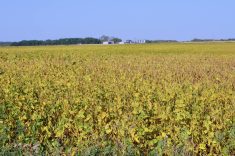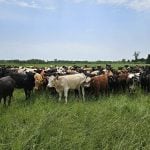Manitoba’s cattle yards remained busy during the second week of December, as the fall run was pushed back a little later this year.
“The year started out slow, with everything behind, and it carried on that way,” said Allan Munroe of Killarney Auction Mart. “We’ll sell twice as many cattle this December as last December.”
Wet pen conditions limited local feedlot demand earlier in the season, according to Munroe. Meanwhile, the late harvest also kept producers busy getting their silage off rather than marketing cattle.
Read Also

Canadian canola prices hinge on rain forecast
Canola markets took a good hit during the week ending July 11, 2025, on the thought that the Canadian crop will yield well despite dry weather.
Heavier cattle moving to the east and west accounted for much of the demand at the start of the fall run, but attention has shifted back to the lighter animals as local buyers came back to the market.
Munroe said those pens would usually have been filled earlier in the year, but are only reaching capacity now.
Looking at pricing data, heavier-weight feeder cattle are generally trading on par with where they were in the final days of 2018. However, top-end bids for lighter steers and heifers are about $10-$20 lower this year.
“The (feeder) market has stayed steadier than usual in November and into December,” Munroe said.
Butcher cows are seeing some seasonal pressure, but Munroe said that was typical for this time of year.
The cow and heifer slaughter in the U.S. is up on the year, which had Munroe optimistic for the market in the spring.
However, the overall outlook was uncertain, especially given the abnormal fall.
In addition to selling cattle now that would have normally moved in September, “we had some cattle that normally come in February (come) in the fall, because either their pens were terrible, they were short on feed, or they had to move some cattle because they couldn’t get the grain and just needed to pay bills,” Munroe said.
The feed situation is highly varied around the province, although Munroe said supplies around Killarney were reasonably OK.
While the hay crop was a bit better than the previous year’s, corn silage was a struggle, he said. As a result, some producers were forced to put up dry chopped corn, which may not keep as well as the normal silage.
Live cattle and feeder cattle futures in Chicago held firm during the week, with optimism over a tentative trade deal between the United States and China propping up the U.S. markets.




















